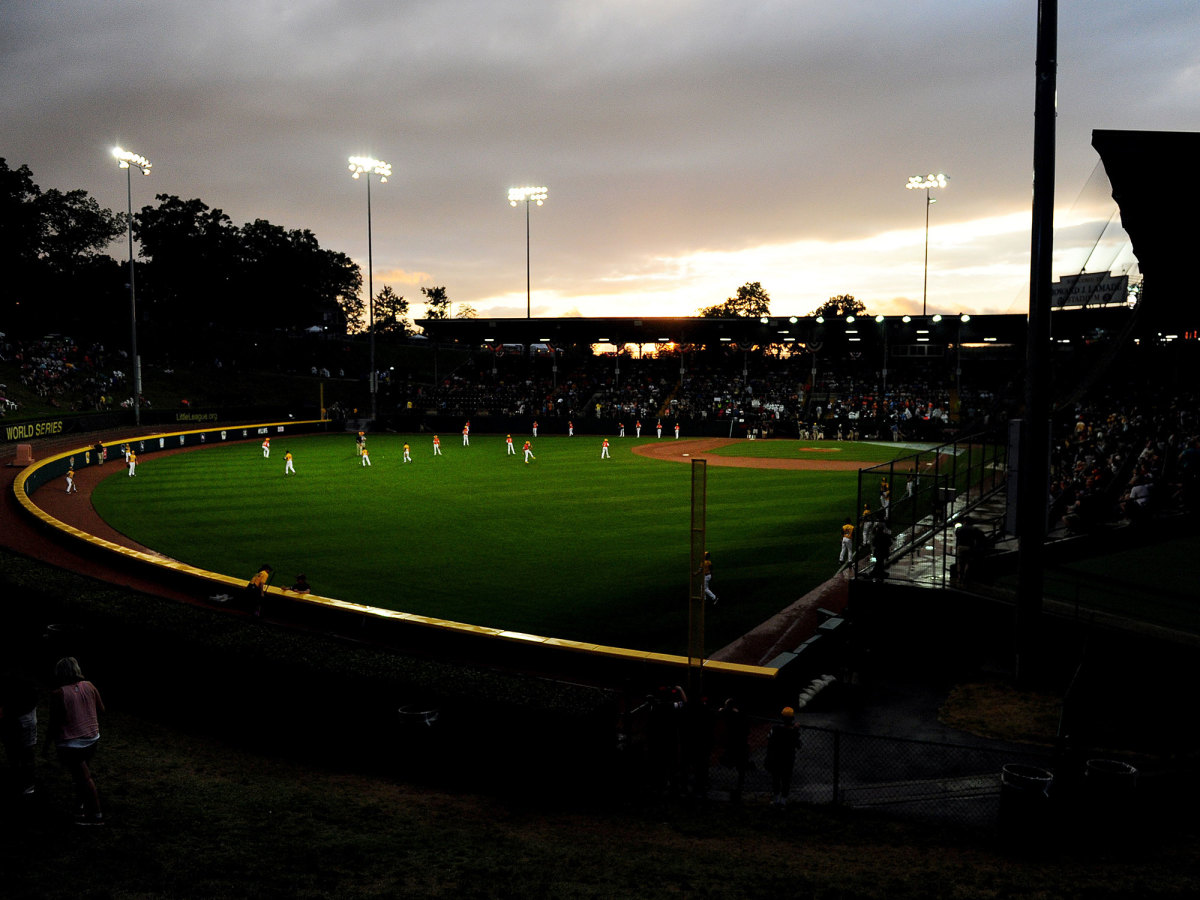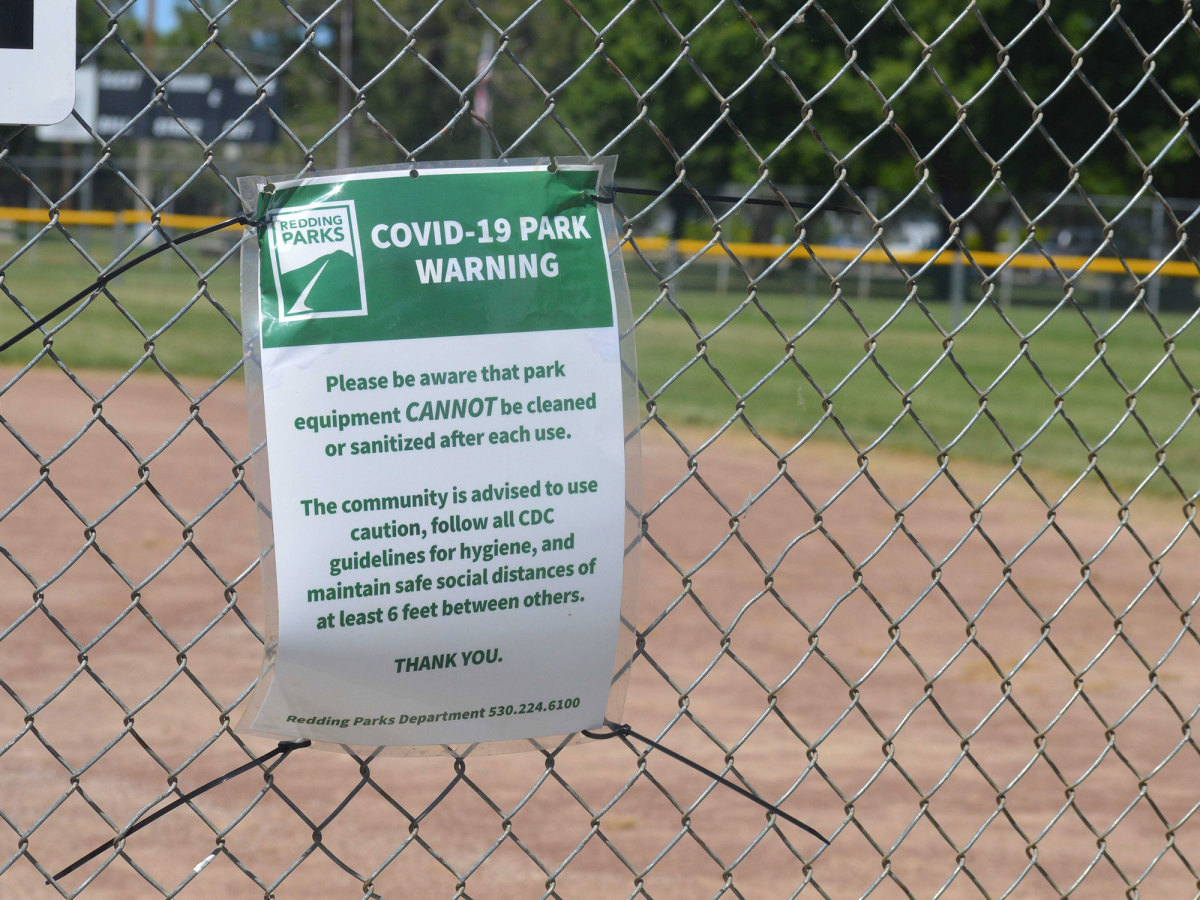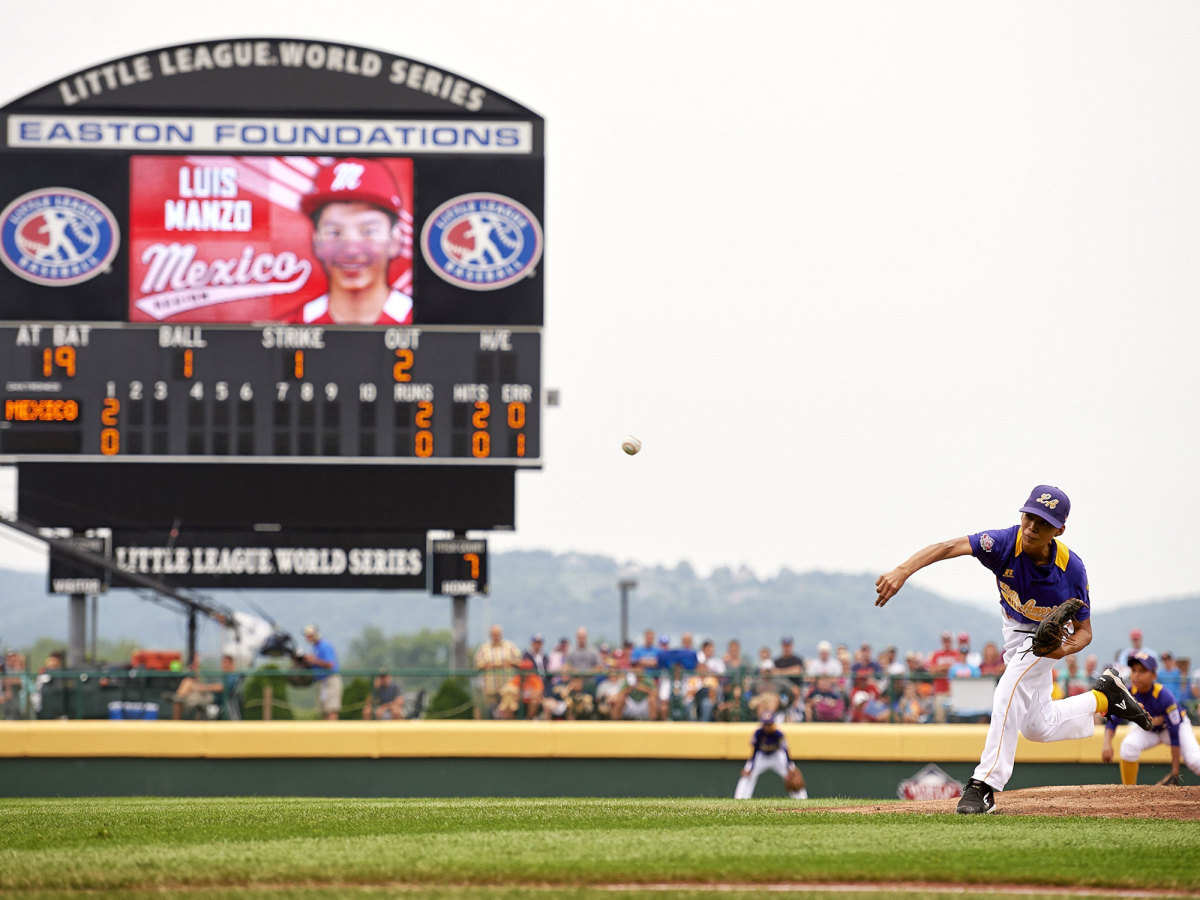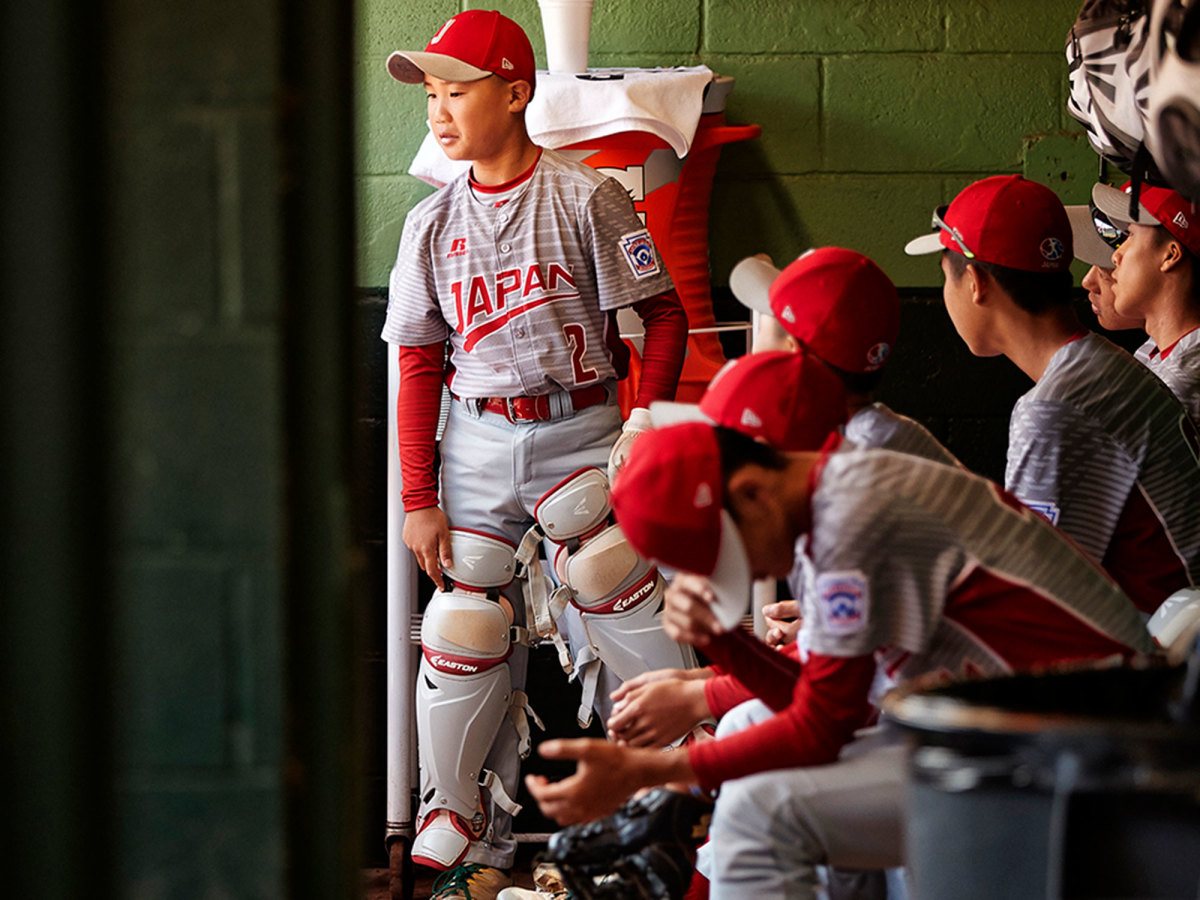The Lost Season of Little League: Inside the Decision to Cancel the World Series
Chris Gingher was putting together a video lesson for his fourth grade class when text messages flooded his phone. The inevitable had just happened.
Earlier that day, April 30, Little League emailed thousands of local volunteers across the country, notifying them that Stephen D. Keener, the President of Little League International, would be holding a press conference that afternoon. As the Little League world watched on Facebook, Keener announced that due to the coronavirus pandemic, there would be no Little League World Series for the first time in its 73-year history.
Gingher, 45, stopped prepping his remote-learning lesson and called up to his 14-year-old son Owen to let him know the bad news.
“I wasn’t surprised by it,” says Gingher, the president of Madison-Kennedy Little League, located just outside Madison, Wisconsin. “But it hit hard.”
No team from Kennedy has ever made it to Williamsport. Heck, no team from Wisconsin has ever made it to Williamsport. But with each season comes the possibility of that year’s 11- and 12-year-olds being the first ones. Less than two weeks after what was supposed to be Kennedy’s opening day, that hope was already gone.
Keener’s announcement confirmed what local league presidents, district administrators and international officials had been expecting for weeks. As the rest of the United States shut down in response to the pandemic, Little League International issued a directive to its 6,000 domestic leagues to postpone activities until April 6. A week later, Little League followed the recommendation of the CDC and lengthened its suspension until May 11. Three days after that target date, it’s unclear if we’ll have any Little League games for the rest of this year.
“Emotionally, it hurts,” says Martin Hoover, who runs one of the largest Little League districts in Southern California. “But at the same time, I do believe Little League made the right call.
“To take 4,000 teams in a matter of two months and whittle them down to 16 is miraculous to begin with. But to do it with this virus going about worldwide, it wouldn’t have been able to take place like it normally would.”
More than 300,000 people attend the World Series each year over the 10-day event. That’s more than 10 times Williamsport’s population and 50 times the population of South Williamsport, the smaller borough where the tournament is played. It’s also 6,000 times the CDC’s recommended maximum gathering size of 50.
You won’t find many people who disagree with Little League’s decision to cancel the World Series. The health risks alone made it almost impossible, and that’s before considering the normal diplomatic hurdles that would have been far more difficult to overcome because of the pandemic.
Still, it took Little League International more than six weeks to cancel the World Series. No matter its practicality, coming to that conclusion was not easy.

Little League wanted to provide comfort at a time when most of the world is looking for any semblance of normalcy. It wanted to offer a recreational escape for the millions of kids who are cooped up at home doing assignments similar to the one Gingher was putting together. It wanted to give us something tangible to represent our recovery.
It also considered the economic cost of a lost season, though that was not as much a concern with hundreds of millions of lives at stake.
During those six weeks, Little League explored all of its options to hold its marquee event and safely get boys and girls from across the globe back onto the field. Ultimately, the world’s largest youth baseball organization was no match for the pandemic that has halted society as we know it.
“There were a lot of ideas, everything from postponement to relocation to single elimination tournaments,” Keener said in a phone interview a few days after his announcement. “We just felt obligated that before we totally committed to canceling, we ought to at least consider all the options for us.”
This account of how Little League made its decision to cancel its World Series is based on interviews with two Little League International officials, local league presidents and district administrators from three different states, the Japanese and Italian Country Directors, the Latin America Regional Director and the U.S. State Department.
***
There really is a Trump tweet for everything.
In Little League’s case, there were two tweets from President Trump’s account on April 4.
“To all of our youth who are missing the start of their @LittleLeague seasons, hang in there!” Trump’s first tweet read. “We will get you back out on the fields, and know that you will be playing baseball soon....”
The next said this: “We will get through this together, and bats will be swinging before you know it. In the meantime, take care of mom and dad, and know that this will not be forever!” He finished by tagging Keener’s Twitter handle, @littleleagueceo.
To all of our youth who are missing the start of their @LittleLeague seasons, hang in there! We will get you back out on the fields, and know that you will be playing baseball soon....
— Donald J. Trump (@realDonaldTrump) April 4, 2020
By the time these tweets were posted, Little League suspended play around the world for three weeks, and Little League International was already deep in discussions for what to do with the World Series.
Just as we consider The Day the Music Died a culturally significant end date in history, we now recognize The Day Sports Stopped as the moment the U.S. began to shut down in response to the COVID-19 outbreak.
We memorialize rock and rollers Buddy Holly, Ritchie Valens and the Big Bopper when we think about the fateful plane crash that killed them near Clear Lake, Iowa on Feb. 3, 1959; and immediately we remember March 12, 2020 for what happened to Major League Baseball, the National Hockey League and the NCAA college basketball tournaments. Little League, in this analogy, is pilot Roger Peterson, the fourth casualty in the crash.
In response to the pandemic, Little League followed CDC guidelines and on March 12 directed all of its leagues to suspend all activities until at least April 6.
“Really, the thought at that point was this would be a temporary pause and by the second week in April, we’d be back to kids playing and everything would be on course for a normal season,” Keener says.
Less than a week later, on March 16, the CDC updated its guidelines and Little League issued a new recommendation to suspend activities for the next eight weeks, pushing the target return date to May 11.
For the rest of March and beginning of April, Little League tried to gather as much information as possible about the pandemic and how it was affecting the areas that hosted the various regional tournaments around the world. It was during this time Keener asked Patrick Wilson, Little League International’s Senior VP of Operations and Program Development, to start looking into what to do if this turned into a much longer delay than they had initially expected.
Keener asked Wilson to figure out how to resume the local seasons and to evaluate the impact the pandemic would have on the tournament. Wilson suggested they divide his operations team into two groups: the first focused on resuming the regular seasons for their leagues; the second on determining what would happen after the local seasons started and “how we would implement the tournament and conclude with our Little League World Series in Williamsport.”

Over the next four or five weeks, Keener and Wilson routinely checked in with the two groups, while listening to what the CDC and the coronavirus task force were saying.
We’ll leave it to the political scribes to analyze why Trump tweeted about Little League. The timing of those tweets, though, was not random.
That afternoon, I reached out to Little League to see what conversations, if any, the president had with Little League about resuming play.
“Mr. Keener and Little League International have been in touch with members of the White House in regards to the Coronavirus (COVID-19) pandemic and its effect on our program,” Little League’s Director of Media Relations Kevin Fountain said in an email. “Little League is focused on getting its players and volunteers back to the baseball and softball fields when it is safe and appropriate.
“We would welcome additional conversations with the White House about how this pandemic is impacting our local Little League programs here in the United States and around the world.”
Translation: We all want Little League back, but we just don't know when or if that will be possible.
***
Three nights after Trump’s tweet, Sportico falsely reported that Little League International informed its regional directors that it had canceled the World Series, attributing the information to an anonymous source.
“At this time, no decision has been made regarding the LLWS,” Little League wrote the next morning in a tweet responding to Sportico. “Out of respect to the children dreaming of a World Series opportunity, it's irresponsible to speculate on these events. Our focus is on the well being of LL families around the world, and the hopeful return to play.”
Little League also sent Sportico a more detailed statement, which was not issued on Twitter and was shared with me that morning.
“We are aware of your inaccurate tweet, and the misinformation shared by your source,” the statement read. “We recently have sent a survey to our highest level volunteers, our 600 District Administrators from around the world, and have been gathering feedback on their perspective on options for resuming Little League play, which we are hopeful will be May 11. This may be where that information was coming from.”
The Sportico tweet gained little traction, though it did indicate the growing concern throughout Little League that there might not be a 2020 World Series.
Keener and the operations team continued to follow news reports and updates from public health officials, but the CDC still had not offered any more updates regarding the May 11 date.
Midway through April, Little League International started to seek more direct advice about what it should do about the World Series. Keener and other senior officials began reaching out to federal public health advisers, Pennsylvania Governor Tom Wolf, his Secretary of Health Dr. Rachel Levine, senior level health officials in the states that host regional tournaments and the U.S. Department of State.
Little League officials had regular meetings with the Pennsylvania health department, and they started to hear back from health officials in other states. Their chances of having a World Series were worsening each day.

Little League explored what it would take to relocate the World Series, but they quickly realized that only one of the regional locations—the western regional facility in San Bernardino, Calif.—could accommodate the event at the same scale that it is in Williamsport. And it was unlikely they could host the World Series there, either.
Hoover’s district covers San Bernardino County, and he was skeptical the World Series could be played before Little League briefly entertained the possibility of relocation. When a softball invitational tournament scheduled for Mother’s Day Weekend at the western regional facility was canceled in mid-March, Hoover realized it would be unsafe to host Little League regional tournaments, which teams need to win before they can advance to the World Series.
Hoover, 34, and his wife Kathlene help out at the western regional tournament facility over the summer. He says over 200 volunteers—far greater than the permissible size of gatherings—from throughout the western region will trek to San Bernardino each year for the regional tournaments. He describes the regionals as a “family reunion” because the volunteers have become such good friends despite getting together only once a year.
“To us, it’s a lost summer,” says Hoover. “The fact that we don’t get to see them and interact with them this year goes beyond just the game itself.”
***
The Little League World Series would not be the same without the teams from other countries. Like the Olympics, the cosmopolitan nature of the event is what makes the World Series great.
However, it was the international aspect of the tournament that made it impossible for the Little League World Series to be held in 2020.
Preparations for the World Series begin shortly after the New Year. Because Little League brings in dozens and dozens of citizens from other countries to Williamsport, they have to work with the U.S. Department of State to secure visas for all the kids, coaches and families for all the non-U.S. teams.
As the head of operations, Wilson oversees the international tournament, coordinating all of the logistics as it progresses from the district levels all the way up through the World Series. He helps line up Little League’s TV agreement with ESPN and works with the marketing team for uniforms and other sponsorship deals.
“I’m not professing to do it all myself,” he says. “But I’m the one responsible for the overall tournament and how it’s implemented.”
One of his first tasks each year is to book flights at major airports in Little League’s different international regions for right before the World Series. For example, he knows whichever team comes out of the Asia-Pacific region will almost certainly have to fly out of or connect in Tokyo to get to the U.S.
Also in January, Little League puts together a preliminary list of the countries with the teams projected to play in Williamsport and sends it to the State Department. It includes the dates of the regional tournaments these teams would be playing. That way the department has an early record of the countries that might need visas, and when they would be needed.
“Once teams start to qualify, that’s when we ramp up,” Wilson says. “It’s an ongoing process that just escalates as the months go by.”
For example, the team representing Cuba this year in the Caribbean region had already been decided. That team would have had to travel to Puerto Rico, which was hosting the regional tournament. This would have been the first time the State Department would have to process visas for a Little League team from Cuba. The Cuban Baseball Federation joined Little League before the 2019 season, but its inaugural regional team lost in Curacao, which hosted last year’s tournament. With Puerto Rico being a U.S. territory, Little League International had started working with the State Department to get the necessary documents prepared before the coronavirus outbreak.
Around the same time Little League was meeting with the Pennsylvania Department of Health, public officials from other states and the CDC, it began talking to the State Department about possible travel restrictions and any other diplomatic complexities that could disrupt the international tournament.
Staff from the Business Visa Center spoke once with Little League International in April about how the pandemic would impact visa processing around the world, according to a State Department official. The current travel restrictions in place would also prohibit some teams from traveling to the U.S.

It’s possible these travel restrictions could be lifted come August when the World Series would take place, but by then there wouldn’t be enough time for the State Department to process all of the visas. The embassies are closed right now, and if they were to reopen in time, they would have such a backlog of visas to process that would be far more important than Little League’s request.
Obtaining visas for the international teams becomes an issue only after teams from these countries win their regional tournaments. And they can’t win their tournaments without playing and winning in all of the preceding rounds to qualify for regionals. Right now, only one country is playing Little League baseball: Chinese Taipei.
Because of this, many countries that normally compete in the international tournament had already decided not to participate this year. Before the official cancellation announcement, Italy and Spain had already told Little League International they would not be able to participate in 2020.
Japan, which has won five of the last 10 World Series, attempted to start its professional baseball and Little League seasons when it looked like the cases of COVID-19 were declining. Soon after, the country experienced a second wave of the virus and everything shut down again.
In a written response to questions, Steve Mita, the Little League director in Japan, said schools have been closed since March and the government has told everyone to stay home. “We are hoping to play in late summer or fall,” Mita said.
The situations in the Latin America and Caribbean regions depend on the country. Leagues in Puerto Rico are waiting until it is safe for the local leagues to resume play. Panama, Cuba and Venezuela have already finished their regular seasons. Carlos Pagan, the Latin America regional director, said in a written response that the pandemic has hit Ecuador the hardest of all the countries in his region.
None of the countries in these regions that have yet to complete their seasons, with the exception of Chinese Taipei from Asia-Pacific, are in a position to look beyond restarting their local leagues.
“While it’s disappointing and nobody wanted it to come to this,” Keener says of cancelling the World Series. “It was to some degree inevitable.”
***
The Friday before Keener’s April 30 announcement, Little League had an international board of directors meeting to go over the latest information. They still were not ready to cancel the World Series, but they knew that was the most likely course of action.
At the end of the discussion, the board empowered Keener, Wilson and other senior management officials of Little League International to decide whether or not there would be a World Series in 2020.
The final update from the health officials came on Tuesday, April 28, two days before Keener’s announcement. Levine sent Keener a letter strongly advising against holding this year’s World Series in Williamsport.
“What we’re seeing, the data we’re looking at, I just think it’s going to be impossible for you to host the Little League World Series in Williamsport,” Levine said. “[It] would be a threat to public health.”
Even after all that, Keener said they still could have waited to cancel the World Series. Little League could have held out and hoped that maybe, just maybe, the hand of fate would take mercy on them and salvage the tournament. Hope is a good thing for sure, but making decisions based on irrational faith isn’t fair to anyone.
In making the disappointing announcement, Keener offered his constituent leagues a new, more reasonable goal: Get back on the field safely before the year ends or snow flies again.
